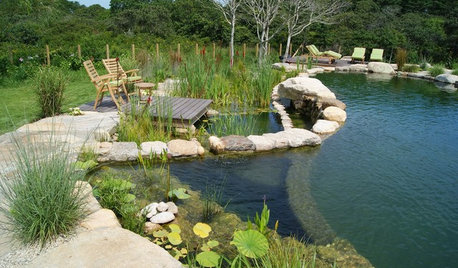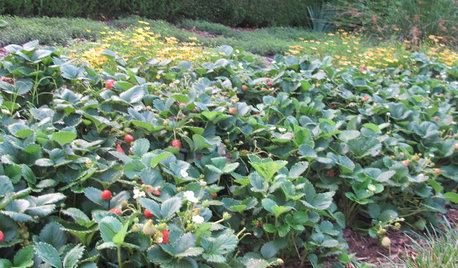Aerating, reseeding, and pre emergent this fall
newbiegardener8
9 years ago
Related Stories

SAVING WATER11 Ways to Save Water at Home
Whether you live in a drought-stricken area or just want to help preserve a precious resource, here are things you can do to use less water
Full Story
GARDENING FOR BUTTERFLIESGardening for the Bees, and Why It’s a Good Thing
When you discover how hard bees work for our food supply, you may never garden without them in mind again
Full Story
EARTH DAYThe Case for Losing the Traditional Lawn
Work less, help the environment and foster connections by just saying no to typical turf
Full Story
LANDSCAPE DESIGNSecrets of a Successful Water Garden
Relax. Having a water garden is much easier once you understand the basics
Full Story
PLANTING IDEASWant a More Colorful, Natural Garden? Try a Perennial Meadow
Spend less time tending and more time taking in the sights by improving on Victorian and prairie garden designs
Full Story
GRASSESHow to Rock a Lawn
Weekend Project: The key to healthy grass begins with the soil. If turf works for you, here’s how to fix it and keep it looking its best
Full Story
REGIONAL GARDEN GUIDESSoutheast Gardener's September Checklist
Fertilize strawberries, plant a tree or two and beckon hummingbirds to your Southern garden this month
Full StoryMore Discussions






roselee z8b S.W. Texas
bostedo: 8a tx-bp-dfw
Related Professionals
Windham Landscape Architects & Landscape Designers · Newcastle Landscape Architects & Landscape Designers · Harvey Landscape Architects & Landscape Designers · Matthews Landscape Contractors · Brockton Landscape Contractors · Gurnee Landscape Contractors · Lake Zurich Landscape Contractors · Lancaster Landscape Contractors · Lewisville Landscape Contractors · Middletown Landscape Contractors · Seven Hills Landscape Contractors · Quartz Hill Landscape Contractors · Ferguson Landscape Contractors · Edwardsville Window Contractors · Lansdowne Window Contractorsbostedo: 8a tx-bp-dfw
roselee z8b S.W. Texas
afirefly